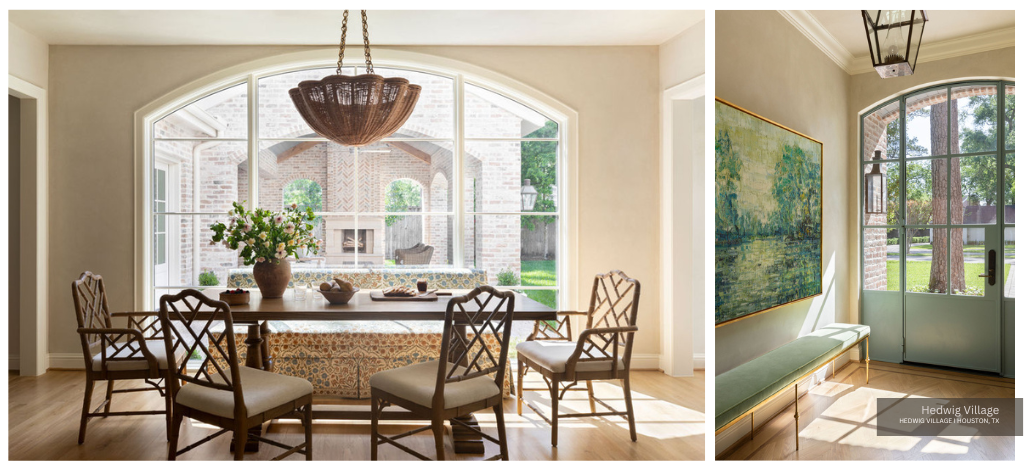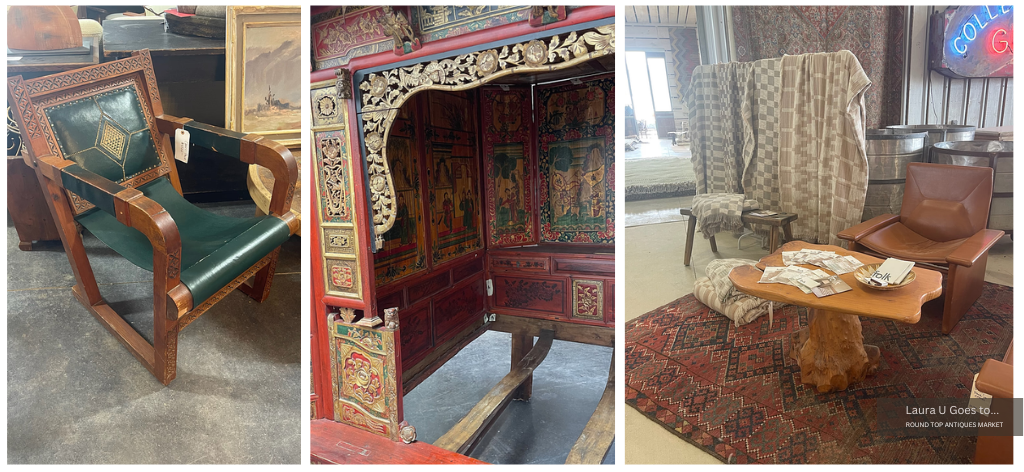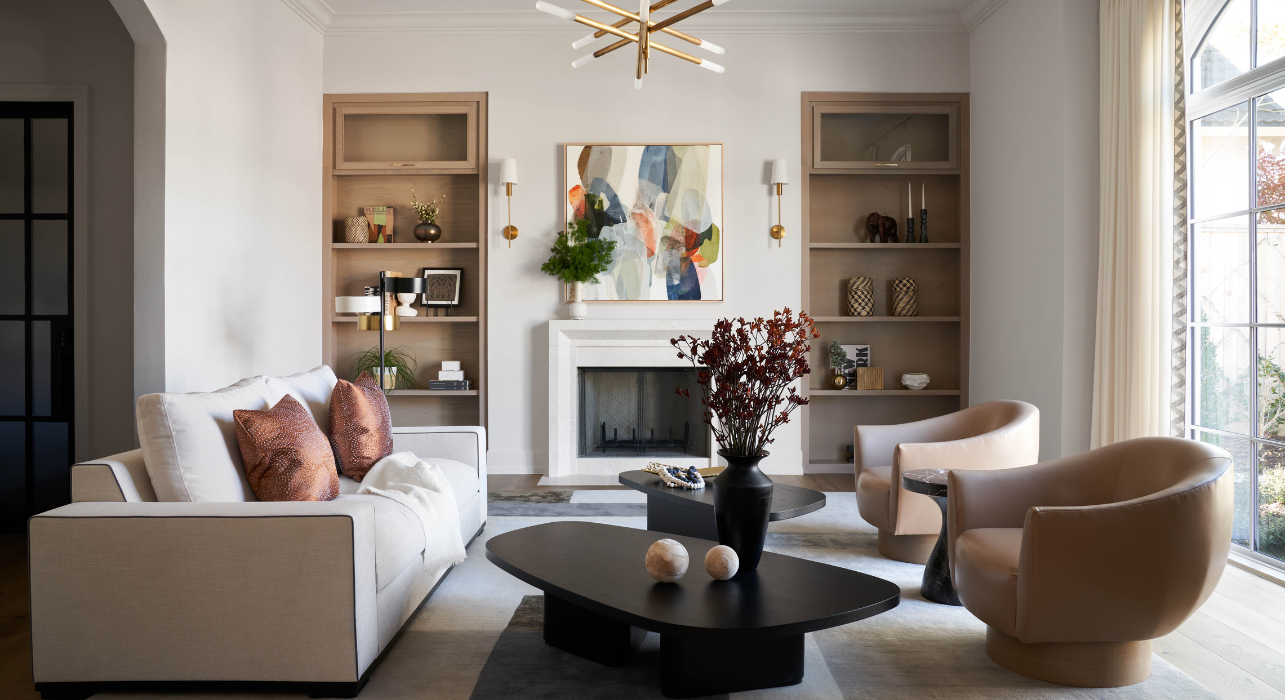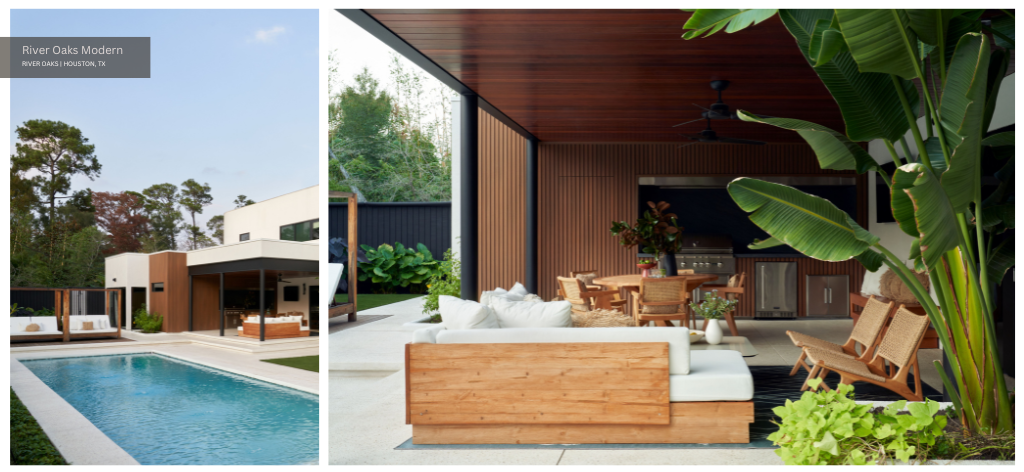In honor of Earth Day, we’re shining a light on sustainability in the interior design industry. Sustainability is a concern for many Americans, and our clients at Laura U Design Collective are no exception. According to Nathan Miller in an article for Forbes, “homebuyers want — and will pay more for — sustainable features like energy-efficient appliances, windows and the like, alongside features that ensure better air quality.” Whether you are renovating your current home or purchasing a new one, here’s how the interior design industry is adapting to ensure your space is healthier and more eco-friendly. Here’s to sustainable interior design!
Here’s How Designers Are Making the Industry More Sustainable
#1 Selecting Sustainable Materials

Many designers and architects are now using reclaimed materials. Salvaged wood, repurposed bricks, and recycled metals not only reduce the demand for new raw materials but also offer unique aesthetic benefits. These materials often carry historical significance and visual texture that can add character and depth to spaces. By incorporating reclaimed elements, designers can significantly lower the carbon footprint of their projects while crafting spaces with a story and a distinct sense of place.
Designers are also turning to rapidly renewable resources as sustainable alternatives that can regenerate quickly and minimize environmental depletion. Materials like bamboo, cork, and hemp are favored for their eco-friendly properties and versatility in design applications. Bamboo, for instance, can mature in as little as three to five years, making it an excellent alternative to traditional hardwoods.
Cork is harvested from the bark of cork oak trees without harming the tree, and hemp produces a fiber that is both durable and biodegradable. These choices not only reflect a commitment to sustainability but also offer durability and aesthetic appeal, making them increasingly popular in contemporary interior design.
#2 Embracing Virtual and Augmented Reality
Virtual consultations and walk-throughs using VR (Virtual Reality) and AR (Augmented Reality) could play a major role in green interior design, especially when working with international clients. The most significant sustainability benefit is the elimination of long-distance travel for in-person consultations and site visits. Air travel is a major contributor to carbon emissions, and VR/AR technologies allow designers and clients to collaborate remotely in incredibly realistic ways.
VR and AR offer immersive experiences far beyond traditional 2D renderings or video calls. Clients get a true feel for space, proportions, and design choices within their own location. This leads to fewer miscommunications, lower material waste, time and resource efficiency, and increased accessibility. To that latter point, these technologies open interior design expertise to broader international markets, while reducing the barrier of travel for those in remote areas or needing accessibility-friendly solutions.
#3 Encouraging Clients to Consider Passive and Biophilic Design

Encouraging clients to consider passive and biophilic design elements is an effective strategy for enhancing both the sustainability and well-being aspects of interior spaces. Passive design utilizes the natural movements of heat and air to maintain comfortable temperature levels, significantly reducing reliance on mechanical heating and cooling systems. This can involve strategically placing windows to maximize natural light and heat during the winter, while minimizing exposure during hotter months.
Simultaneously, incorporating biophilic design elements—such as indoor plants, natural light, water features, and materials that mimic nature—helps create a more inviting and restorative environment. These design strategies not only align with ecological principles by reducing energy consumption and integrating nature into daily life, but they also improve mental health and productivity, making spaces more pleasant and sustainable.
#4 Sourcing Antique and Vintage Furniture, Decor, Lighting, and More

Sourcing antique and vintage furniture, decor, lighting, and more is an increasingly popular approach across eco friendly interior design firms. This practice not only prevents additional waste and reduces the demand for new resource-intensive products but also adds unique character and history to interior spaces. Vintage pieces often come with a level of craftsmanship and detail that is rare in contemporary mass-produced items, offering a distinctive aesthetic appeal.
Additionally, incorporating antiques can be a form of recycling that extends the life of existing items, avoiding the environmental impact associated with new productions. By choosing vintage and antique furnishings, designers not only create visually appealing, eclectic spaces but also contribute to a more sustainable consumption model, emphasizing reuse over new production.
#5 Working with Eco-Friendly Appliance and Fixture Manufacturers
Of course, energy efficiency is another major concern. That’s why many sustainable interior designers choose to work with eco-friendly appliance and fixture manufacturers, emphasizing the integration of energy-efficient and water-conserving technologies. Key products include artificial lighting with LED bulbs, which use a fraction of the energy of traditional bulbs, smart thermostats that optimize heating and cooling systems to reduce energy use, and high-efficiency appliances that minimize electricity and water consumption.
Additionally, the adoption of low-flow water fixtures such as showerheads, faucets, and toilets in interior spaces not only conserves water but also reduces the overall utility costs for homeowners. These products combine functionality with environmental stewardship, offering both aesthetic appeal and practical benefits, making them essential elements in the design of modern, eco-conscious homes.
#6 Designing Modular, Multipurpose Furniture
Modular, multipurpose furniture is another element of sustainable interior design because of its adaptability, space efficiency, and reduced material consumption. Modular furniture systems are designed to be reconfigured to suit changing needs and spaces, which greatly extends their usability and decreases the likelihood of disposal when life circumstances change. This adaptability ensures longevity and reduces the demand for new items, thereby lowering overall waste.
Plus, multipurpose pieces, like a cocktail table that expands into a dining table or an ottoman with built-in storage, are especially beneficial in small living environments where space is at a premium. These items minimize the need for multiple pieces of furniture, conserving resources and reducing clutter.
Modular furniture often features a flat-pack design that enhances transport efficiency and reduces carbon emissions associated with shipping. The ability to replace or repair individual components also contributes to the prolonged lifespan of these pieces. Finally, the flexibility of modular furniture encourages creativity and personalization in arranging interiors, fostering a deeper connection to one’s living space and reducing the impulse to frequently replace furnishings.
#7 Prioritizing Durability and Timelessness Over Trends

Prioritizing durability and timelessness over trends is a crucial principle in sustainable interior design, focusing on creating spaces that stand the test of time both in style and functionality. This approach involves selecting high-quality, durable materials and classic designs that won’t fall out of fashion quickly, thereby reducing the cycle of frequent replacements and the environmental impact associated with it.
By investing in well-made pieces that are designed to last, consumers can minimize waste and decrease the demand for new resources. This strategy not only conserves materials and energy but also ensures that interiors remain appealing and functional for many years, avoiding the need for costly and wasteful updates.
Timeless design also fosters a sense of continuity and comfort in a home, encouraging a deeper appreciation and sustained use of each item. Emphasizing durability and classic aesthetics helps shift consumer behavior towards more sustainable consumption patterns and promotes a more thoughtful and responsible approach to interior design.
#8 Making the Home a Healthy Haven
Enhancing indoor air quality is essential for human health, which is why so many designers are now making it a priority. Many interior designers now opt for low-VOC (volatile organic compounds) or no-VOC paints, sealants, and adhesives. VOCs are known for off-gassing harmful chemicals into the air, which can cause health issues over time.
By selecting products with low or no VOCs, designers ensure that interiors are safer and healthier for occupants. This choice is particularly important in spaces like homes and schools, where indoor air quality directly impacts daily comfort and health. As awareness of these health impacts grows, more manufacturers are developing and marketing low-VOC products, aligning product offerings with the increasing demand for healthier living environments.
And Here’s How Vendors Are Adapting
Material Transparency
In response to the increasing consumer demand for ethical and sustainable products, more vendors within the interior design industry are beginning to prioritize material transparency. This trend involves clearly detailing the origins of materials, the environmental impact of their manufacturing processes, and the specifics of the materials used in their products.
Such transparency empowers consumers to make informed decisions, aligning their purchasing choices with their values. It also pressures manufacturers to adopt more sustainable practices, as consumers can now assess and compare the sustainability credentials of different products.
Green Design Certifications
To aid each homeowner and interior designer in identifying products that meet rigorous environmental and social standards, many vendors now highlight certifications. Labels like B Corp, the Forest Stewardship Council (FSC), and GREENGUARD are becoming more common and serve as easy indicators of a product’s sustainability.
B Corp certification signals a company’s overall social and environmental performance, FSC certification assures that wood products come from responsibly managed forests, and GREENGUARD certification ensures that a product has met stringent chemical emissions standards, contributing to healthier indoor environments and a more sustainable future for us all.
Take-Back Programs
Some forward-thinking vendors in industry have started implementing take-back programs as part of their commitment to sustainability. These programs allow customers to return products at the end of their lifecycle, facilitating responsible disposal or recycling.
By doing so, vendors not only ensure that materials are handled in an environmentally friendly manner but also reinforce the principles of the circular economy. This practice reduces waste, supports recycling efforts, and lessens the environmental impact associated with the production of new materials.
Final Thoughts: Circular Economy Models and the Future of Environmentally Sustainable Design
As new vendors and design firms enter the industry, we expect more to adopt circular economy models. This concept is gaining traction in our industry as a means to combat the environmental impact of traditional manufacturing and disposal methods.
In a circular model, interior design elements are crafted with their entire lifecycle in mind. This approach goes beyond simple recycling; it involves designing products that can be easily disassembled and reused or repurposed into new items.
For example, adjustable and mobile furniture that can be adapted for different uses over time, or materials engineered to be durable yet easy to break down and reform, are pivotal in reducing waste. Such strategies not only minimize landfill contributions but also decrease the demand for raw materials, thus conserving natural resources and reducing energy usage in production.
Implementing circular economy principles also drives innovation in design and materials science. Designers are encouraged to think creatively about how components can be repurposed, leading to innovative designs that are as functional as they are sustainable. For instance, using thread made from recycled plastics to create upholstery or developing non-toxic adhesives that facilitate easy disassembly at the end of a product’s usable life.
These developments promise to make sustainable design more practical and accessible, influencing industry standards and consumer expectations of interior designers. As this trend grows, it could trigger an enormous shift in how products are consumed and disposed of, leading toward more sustainable interior design projects boasting dramatically lower energy consumption and environmental impact.



